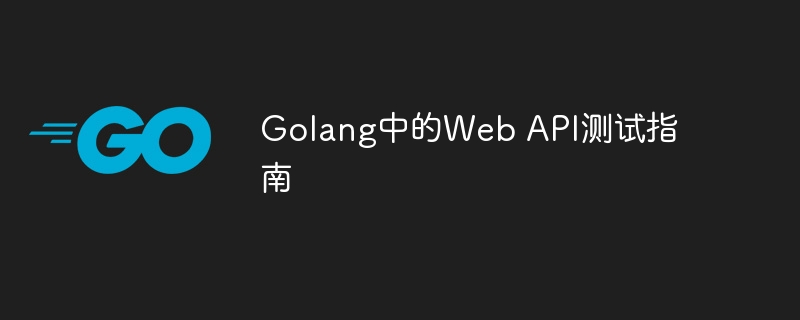

Web API Testing Guide in Golang
Web API testing is a very important part of the development process, it can help us detect and verify the functionality and performance of the API. In Golang, there are some powerful libraries and tools that can help us with Web API testing. This article will introduce you to some basic principles and sample code of Web API testing in Golang.
1. Choose a suitable testing framework
In Golang, there are a variety of testing frameworks to choose from, such as GoConvey, Ginkgo and testing. Among them, testing is the built-in testing framework of Go language, which is relatively simple and easy to use. We choose to use the testing framework for examples here.
2. Write test cases
Before conducting Web API testing, we must first write test cases. Test cases are code used to verify the functionality and performance of an API. Here is a simple example:
package main
import (
"net/http"
"net/http/httptest"
"testing"
)
func TestGetUser(t *testing.T) {
req, err := http.NewRequest("GET", "/users/1", nil)
if err != nil {
t.Fatal(err)
}
rr := httptest.NewRecorder()
handler := http.HandlerFunc(GetUserHandler)
handler.ServeHTTP(rr, req)
if rr.Code != http.StatusOK {
t.Errorf("expected status code %d but got %d", http.StatusOK, rr.Code)
}
expectedResponse := `{"id": 1, "name": "John Doe"}`
if rr.Body.String() != expectedResponse {
t.Errorf("expected response body %s but got %s", expectedResponse, rr.Body.String())
}
}In the above example, we have defined a test function called TestGetUser. In the function, we first create an HTTP request and send it to the server. Then, we created a recorder to record the server's response. Finally, we verified that the status code and response body returned by the server were as expected.
3. Run the test
After writing the test cases, we need to run the test to verify the functionality and performance of the API. In Golang, you can run tests by running the following command:
go test
After running this command, the Go language compiler will automatically run all test functions and output the test results.
4. Use simulated data
In some cases, test cases may need to be tested using simulated data. There are some excellent libraries in Golang that can help us create and manage simulation data, such as gofaker and gomock. The following is an example of using gofaker to create simulated data:
package main
import (
"fmt"
"github.com/bxcodec/faker/v3"
)
type User struct {
ID int `faker:"unique"`
Name string `faker:"name"`
}
func main() {
user := &User{}
err := faker.FakeData(user)
if err != nil {
fmt.Println(err)
}
fmt.Printf("ID: %d, Name: %s", user.ID, user.Name)
}In the above example, we define a User structure and use the faker library to generate simulated data for it. We then printed these simulated data.
5. Exception handling
Exception handling is a very important part when testing Web API. We need to ensure that our code handles various exceptions correctly. Here is an example of handling errors:
package main
import (
"errors"
"fmt"
)
func Divide(a, b int) (int, error) {
if b == 0 {
return 0, errors.New("division by zero")
}
return a / b, nil
}
func main() {
result, err := Divide(10, 0)
if err != nil {
fmt.Println(err)
return
}
fmt.Println(result)
}In the above example, we have defined a function called Divide to perform division operations. If the divisor is zero, we return an error.
6. Summary
In this article, we introduced the basic principles and sample code for Web API testing in Golang. We learned how to choose a suitable testing framework, how to write test cases, how to use mock data, and how to handle exceptions. I hope these contents can help you better conduct Web API testing and improve your development efficiency.
The above is the detailed content of Web API Testing Guide in Golang. For more information, please follow other related articles on the PHP Chinese website!
 How to define variables in golang
How to define variables in golang
 What are the data conversion methods in golang?
What are the data conversion methods in golang?
 What are the commonly used libraries in golang?
What are the commonly used libraries in golang?
 What is the difference between golang and python
What is the difference between golang and python
 What does independent direct connection mean?
What does independent direct connection mean?
 How to delete blank pages in word without affecting other formats
How to delete blank pages in word without affecting other formats
 The difference between header files and source files
The difference between header files and source files
 What are the file types
What are the file types




